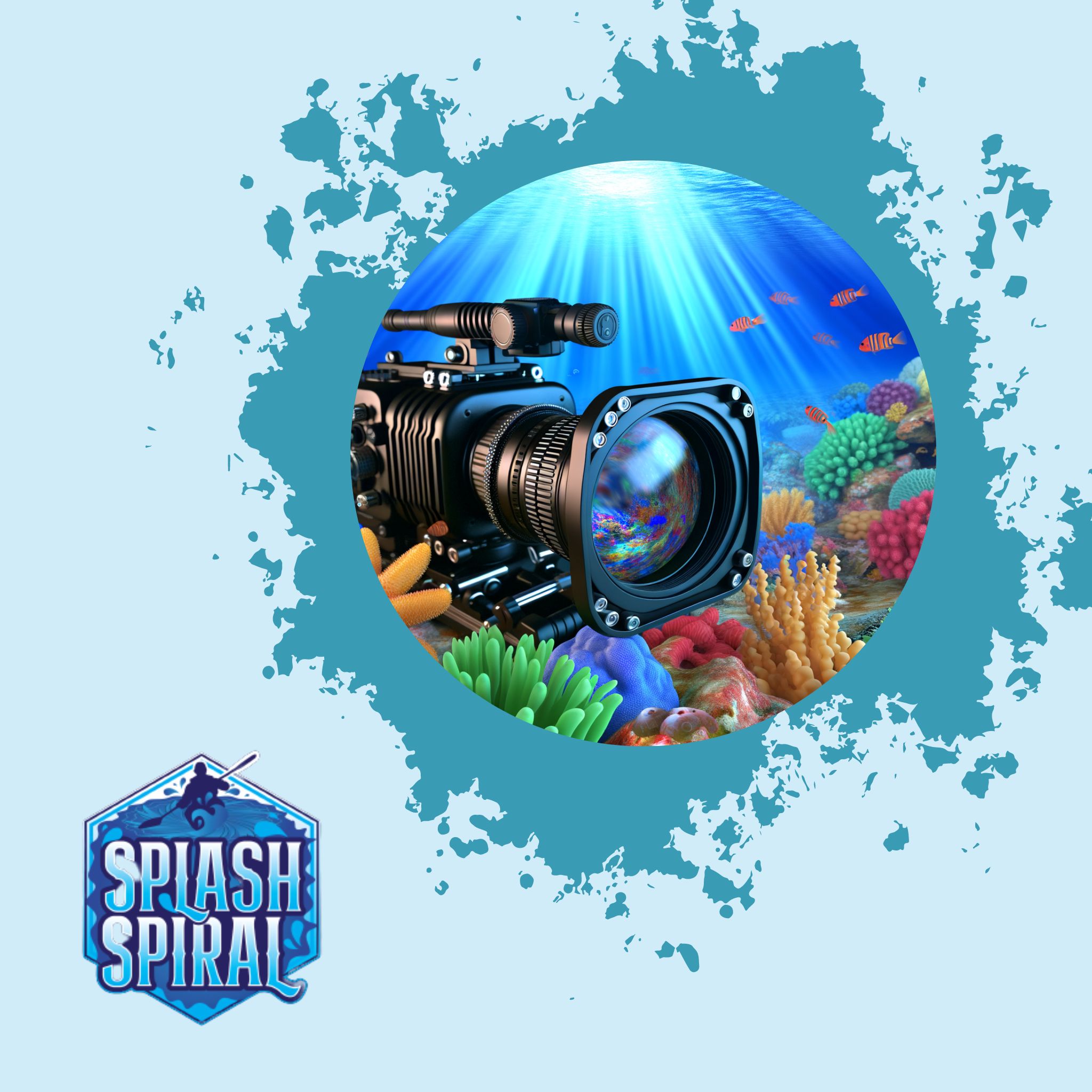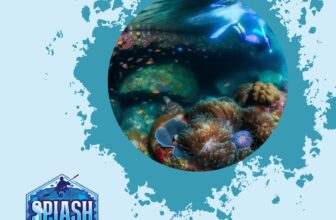
Venturing into the world of underwater macro videography is an exciting journey, especially for beginner photography divers. Getting the right gear and setups can be challenging but rewarding when you capture those intricate details of aquatic life. This article aims to guide you through selecting the best underwater macro video setup for your needs, ensuring that your dive is both enjoyable and fruitful.
Introduction
Welcome, aspiring underwater photography divers! If you're someone starting out or wanting to dip your fins into the fascinating world of underwater macro videography, you've come to the right place. Underwater macro videography involves capturing the minute details of marine life up close, revealing a hidden world that's often missed by the naked eye. From the delicate movements of a nudibranch to the intricate patterns on a seahorse, the possibilities for stunning footage are endless.
But, to nail those mesmerizing shots, having the right gear is crucial. The right setup not only ensures the quality of your videos but also enhances your overall diving experience. With proper equipment, you'll be better prepared to capture those fleeting underwater moments with clarity and precision. Let's dive into the essentials you'll need to get started and make your underwater macro videography adventure both enjoyable and successful.
Understanding Underwater Macro Videography
Before diving into the deep end with gear lists and setups, it's crucial to understand what underwater macro videography is and why it's a fascinating niche. In simple terms, underwater macro videography involves capturing close-up shots of small subjects found underwater, such as tiny fish, coral polyps, and intricate marine invertebrates. The goal is to showcase the details that are often missed by the naked eye, bringing the miniature underwater world to life in stunning, high-definition videos.
Unlike other types of underwater photography or videography that focus on broader scenes or larger subjects, macro videography zeroes in on the minute aspects of marine life. This focus allows for the capture of exquisite patterns, vibrant colors, and the unique behaviors of tiny underwater organisms. It’s akin to peering through a magnifying glass at an entirely alien world, making it particularly appealing to those who have a knack for the intricate and the minute.
To achieve those fantastic close-up shots, you'll need specialized equipment. Regular underwater camera setups often fall short in macro videography due to limitations in focus and light handling. Passionate macro videographers typically invest in dedicated macro lenses, specialized underwater housings, and advanced lighting systems to enable extreme close-ups and bring out the vivid details of their subjects. This specialized gear is what makes all the difference in transforming a basic underwater scene into a mesmerizing macro masterpiece.
Understanding these distinctions will help you better appreciate the need for particular equipment and techniques, ensuring that your foray into underwater macro videography is both successful and rewarding.
Essential Gear for Underwater Macro Videography
Diving into underwater macro videography requires some specialized equipment to ensure you capture stunning close-up shots of the underwater world. Here's a breakdown of the essential gear you'll need to get started.
Waterproof Camera Case
A reliable waterproof camera case is crucial for protecting your equipment from water damage while enabling you to take crisp and clear videos. Here’s what to look for:
Key Features
- Depth Rating: Ensure the case can handle the depths you'll be diving to. Beginners often start with cases rated for at least 40 meters, but you may want a higher rating as you get more adventurous.
- Material: Look for high-quality, durable materials like polycarbonate or aluminum that can withstand underwater pressure and potential impacts.
- Seals: Double or triple O-ring seals offer the best protection against leaks. Make sure these seals are well-maintained and clean.
- Ease of Use: The case should allow easy access to your camera’s controls. Ergonomic designs are helpful so you can swiftly adjust settings without hassle.
Trusted Brands
- Nauticam: Known for their robust build quality and excellent customer service.
- Ikelite: Offers a wide range of cases suitable for various camera models with a good balance of functionality and price.
- Sea & Sea: Popular for their reliable and well-sealed housings.
When choosing a waterproof camera case, taking the time to read reviews and perhaps renting before buying can save you headaches in the long run.
Underwater Gear
Your diving gear is equally essential to creating smooth and enjoyable underwater videography experiences. While your camera setup is crucial, don’t overlook the following:
Essential Diving Kit
- Fins: Choose fins that offer a good balance of power and maneuverability. Split fins can help reduce leg fatigue, allowing you to stay longer in the water.
- Masks: A high-quality, well-fitting mask that prevents leaks and ensures clear vision is crucial. Look for masks with tempered glass lenses and a comfortable silicone skirt.
- Wetsuits/Drysuits: Depending on the temperature of the water you’ll be diving in, a well-insulated suit can keep you comfortable and extend your dive time.
For more detailed information on essential diving gear, feel free to visit comprehensive diving resources like Splash Spiral.
By investing in robust and reliable underwater gear, beginner photography divers can ensure they have a safe and productive diving experience while capturing breathtaking underwater macro videos.
Camera Protection
In the world of underwater macro videography, protecting your camera is crucial. The combination of saltwater, sand, and the inherent risks of diving can compromise your equipment if you're not careful. Here's where practical knowledge and preventive maintenance come into play.
First and foremost, always ensure you rinse your camera and housing with fresh water immediately after a dive. Saltwater can corrode your gear over time, leading to malfunctions and potentially permanent damage. Use a bucket or dedicated rinse tank to soak your equipment thoroughly, paying special attention to buttons, seams, and moving parts. A soft brush can help remove stubborn salt deposits or sand particles without scratching surfaces.
Next, frequently inspect your waterproof housing's O-rings for any signs of wear, tear, or debris. These rubber seals are your camera’s primary line of defense against leaks. A quick visual check before each dive can save you a lot of trouble. Apply a tiny amount of silicone grease to keep them in good condition, but be cautious not to over-lubricate, as excess grease can attract more debris.
Investing in additional protective accessories is wise. Lens covers and port caps are indispensable for preventing scratches and damage during transport or surface intervals. Consider having a few microfiber cloths handy to clean your lenses before sealing them in their housings.
Lastly, always perform a pre-dive leak test. Assemble your camera gear, close the housing, and submerge it in water while observing for any bubbles. A few minutes spent on this step can significantly reduce the risk of a mid-dive disaster.
Proper camera protection isn't just about preserving your investment; it's about ensuring you can continue to enjoy capturing the tiny wonders of the underwater world without worry. By incorporating these straightforward yet effective measures into your routine, you'll keep your equipment in top shape and your focus on the dive.
Housing Reviews
When diving into the intricate world of underwater macro videography, the importance of a quality camera housing cannot be overstated. Essentially, a camera housing acts as the armor for your precious gear, protecting it from the high pressures and corrosive saltwater environment found underwater. This section will break down what you need to know about camera housings and provide a brief review of popular options available on the market.
Why Camera Housing Matters
Camera housings are an essential component of your underwater video setup. These protective boxes are specifically designed to encase your camera, providing waterproof capabilities at various depths. A good housing keeps your camera safe from water damage, pressure, and potential impacts. Without one, even the best and most expensive camera will be susceptible to water damage after just a few meters below the surface.
Key Features to Look For
When selecting a housing for underwater macro videography, several factors come into play:
-
Depth Rating: Ensure the housing can withstand the depths you plan to dive. For recreational diving, a rating of at least 40 meters (130 feet) is recommended.
-
Material: Most housings are crafted from polycarbonate or aluminum. Polycarbonate is lightweight and affordable, whereas aluminum offers superior durability and corrosion resistance.
-
Seals and Latches: Double or even triple O-ring seals are indicative of a reliable housing. Secure latches will provide peace of mind that your gear is safe.
- Ergonomics and Usability: Good housings offer easy access to all essential camera functions. Check for housings with large buttons and ergonomic designs that can be used comfortably even with gloves on.
Popular Camera Housings
Here are brief reviews of some popular camera housings that are well-suited for underwater macro videography:
-
Nauticam NA-RX100VII (for Sony RX100 VII): Robust and crafted from anodized aluminum, it offers a depth rating of 100 meters (330 feet). Users praise its ergonomic design and easy-to-use controls.
-
Ikelite 200DL (for Canon EOS R5): Known for its affordability and durability, this polycarbonate housing features a depth rating of 60 meters (200 feet). It provides excellent access to camera functions through large, well-placed buttons.
-
Sea & Sea MDX-R R6 (for Nikon Z6/Z7): Made from a corrosion-resistant aluminum alloy, this housing supports a depth rating of 100 meters (330 feet). Divers appreciate its precision engineering and seamless integration with Nikon cameras.
Importance of Reading Housing Reviews
Before making a purchase, it's crucial to read detailed reviews and user feedback on camera housings. These reviews can provide insights into the real-world performance, durability, and ease of use of different models. User testimonials and expert reviews often highlight potential shortcomings and benefits that may not be apparent from product descriptions alone.
By thoroughly researching and choosing the right housing, you can ensure that your underwater macro videography adventures are both safe and successful. A well-protected camera allows you to focus on capturing the mesmerizing details of aquatic life, worry-free.
Best Camera Setups for Macro Videography
Choosing the right camera for underwater macro videography can significantly enhance your video quality and overall diving experience. Let’s break down the best options:
Compact Cameras
Advantages
Compact cameras are incredibly user-friendly, making them perfect for beginners. They're not too bulky, which is a critical factor when diving. Most models come with built-in macro modes, allowing you to capture small marine creatures without much fuss.
Recommended Models
- Sony RX100 VII: This camera offers excellent video resolution, focus speed, and decent underwater performance.
- Canon G7X Mark III: Known for its bright lens and high-quality video capability, it's a favorite among beginner divers.
Compatible Waterproof Housings
Affordable and reliable waterproof housings for these models are essential. Look for options like:
- Fantasea FRX100 VI/VII for the Sony RX100 series.
- Isotta Housing for the Canon G7X Mark III.
Mirrorless Cameras
Benefits
Mirrorless cameras are a fantastic middle-ground. They are more advanced than compact cameras but lighter and more portable than DSLRs. They provide superior video quality and versatility, crucial for macro videography.
Suitable Models
- Sony A6400: This model is exceptional for its autofocus capabilities and 4K video recording.
- Olympus OM-D E-M5 Mark III: Known for its durability and excellent image stabilization, making it perfect for underwater use.
Appropriate Housing and Lenses
Housing and lens selection are essential for mirrorless cameras:
- Nauticam NA-A6400 for the Sony A6400 with macro lenses like Sony 90mm f/2.8.
- Olympus PT-EP14 for the E-M5 Mark III with an Olympus 60mm f/2.8 macro lens.
DSLR Cameras
For Advanced Users
DSLR cameras are the go-to for those seeking professional-grade quality. They offer the best image and video clarity, but they are heavier and require more sophisticated handling.
High-Performing Models
- Canon EOS 90D: Excellent for its 4K capabilities and robust autofocus system.
- Nikon D850: Known for its stunning resolution and dynamic range, making it ideal for serious underwater macro videographers.
Choosing Robust Housings
DSLRs demand durable and robust housings:
- Aquatica AD90 for Canon EOS 90D.
- Sea & Sea MDX-D850 for Nikon D850.
Each camera type offers unique advantages, so your decision will depend on your specific needs and budget. Compact cameras are easy and practical, mirrorless cameras provide a balance of quality and portability, and DSLRs are unbeatable in professional settings. Equip yourself with the right housing, and you're set to dive in and capture the underwater world like never before.
Lighting and Stabilization
Underwater Lighting
Without proper lighting, even the best underwater camera setup will struggle to capture the vibrant details that make macro videography so mesmerizing. In underwater settings, natural light diminishes rapidly as you go deeper, making artificial lighting indispensable.
Importance of Good Lighting
Proper lighting highlights the intricate details of your subjects and brings out their true colors, which are often lost in the murky blues and greens of the underwater environment.
Types of Underwater Lights
- Continuous Lights: Constant light sources that help in both focusing and illuminating your subject. Great for video as they provide consistent lighting without throwing off white balance.
- Strobes: Primarily used in photography, strobes can also be useful in videography to provide high-intensity bursts of light, freezing the action and enhancing details.
Recommended Lights
- Compact LED Lights: Ideal for beginners, easy to handle, provide excellent light output, and generally cost-effective.
- Examples: SeaLife Sea Dragon, Kraken Sports Hydra series.
- Bigger Rigs: For those looking to step up their game.
- Examples: OrcaTorch D900V, Underwater Kinetics Aqualite Pro.
Positioning and Usage Tips
- Angle Your Lights: Avoid shining the light directly at your subject to reduce backscatter (those pesky particles that show up in your video). Angling your lights slightly away or using diffusers can help.
- Adjust Brightness: Make use of adjustable settings to fine-tune the brightness. Overlighting can wash out the colors and details, while too little light will defeat the purpose.
- Placement: Experiment with where you place your lights. Typically, having two lights positioned at 10 o'clock and 2 o'clock, just above your camera, works well for even illumination.
Stabilization Gear
Quality stabilization is critical for clear and steady underwater macro videos. The water current can shift you around, leading to shaky footage that detracts from the intricate details you’re trying to capture.
Need for Stabilization
Smooth, stable footage is key to professional-looking videos. Even small movements can lead to a jittery video that’s hard to watch, especially when focusing on tiny subjects.
Stabilization Options
- Tripods: Provide a stationary base, ideal for when you find a perfect spot and want to capture steady footage.
- Models: GorillaPod, Aquatica Tripod Clamp designed for underwater use.
- Tray Systems: A popular choice for underwater videographers, trays provide a stable platform with handles for better control.
- Example: Double-handle tray systems like the Kraken Sports Tray offer excellent stability and balance.
- Handles and Grips: If you prefer something more compact, handles or pistol grips can provide additional stabilization and are easier to maneuver in tight spots.
Product Recommendations
- For Beginners: The Flex-Arm Tray System offers flexibility and stability, making it a good starter setup.
- For Advanced Users: The Nauticam Easitray II allows for modular components, giving you room to expand your system as you gain more experience.
By combining good lighting with proper stabilization, you’ll be on your way to capturing stunning underwater macro videos that truly stand out. Always remember — practice makes perfect. So get out there, experiment with different setups, and find what works best for you. Happy diving!
Practical Tips for Successful Underwater Macro Videography
Diving into underwater macro videography can be both thrilling and demanding. Capturing those stunning, intricate details of tiny marine life calls for a blend of technique and patience. Here are some practical tips to help you navigate this specialized field:
Patience and Practice
One of the most crucial aspects of underwater macro videography is patience. Marine creatures are often elusive and can be easily disturbed. Spend some time observing your subjects before pressing record. The more you understand their behavior, the better your chances of capturing incredible footage. Additionally, honing your diving skills will allow you to approach subjects without causing disruption.
Composing Shots
Composition is key to creating engaging macro videos. Slow down and take time to frame your shots meticulously. Focus on the subject's eye or unique features to draw in the viewer. Remember, the goal is to tell a story with your footage, so think about the background and how it complements your subject. Avoid clutter and aim for a clean, simple backdrop.
Utilizing Manual Settings
Switching to manual settings gives you greater control over your camera, allowing you to optimize exposure, focus, and white balance. For macro videography, manual focus is often more reliable than autofocus, which can struggle with small subjects. Fine-tuning these settings ensures that your footage is sharp and well-exposed, capturing the true beauty of your underwater subjects.
Stabilization Techniques
Steady footage is essential for high-quality macro videos. Employing stabilization gear, like trays or handles, can significantly reduce shakiness. Practice holding your camera steady and use both hands to minimize movement. Utilizing natural stabilizers, such as rocks or the ocean floor, can also help you keep your shot steady.
Improving Lighting
Natural light can be scarce in underwater environments, making artificial lighting crucial. High-quality underwater lights or strobes can illuminate your subject and bring out vibrant colors. Position your lights at an angle to reduce harsh shadows and backscatter. Experimenting with light intensity and placement will help you achieve the best results.
Mastering Buoyancy
Good buoyancy control is fundamental in underwater macro videography. It allows you to remain stable and approach your subjects smoothly. Practice maintaining neutral buoyancy and use your breath to make fine adjustments in the water. Stability in the water helps to avoid sudden movements that could spook your subjects or blur your footage.
By integrating these practical tips into your underwater macro videography, you'll be better equipped to capture breathtaking footage of the hidden wonders beneath the waves. Remember, it takes time and dedication, so keep practicing and exploring new techniques. Happy diving!
Conclusion
Navigating the intricate world of underwater macro videography may seem daunting at first, but with the right gear and knowledge, you're set to capture the mesmerizing details of aquatic life.
Key Takeaways
- Gear Essentials: Ensure you have waterproof camera cases and proper underwater gear.
- Camera Choices: Consider the best options in compact, mirrorless, and DSLR cameras.
- Lighting and Stabilization: Practical tips can elevate your captures from ordinary to extraordinary.
Explore and Experiment
Continuous exploration and experimentation are key. Don't be afraid to try different setups and refine your techniques.
Additional Resources
For more insights and recommendations on the best underwater photography gear, be sure to check out Splash Spiral.
By following this guide, you'll be well on your way to creating captivating underwater macro videos. Embrace the adventure, and happy diving!







